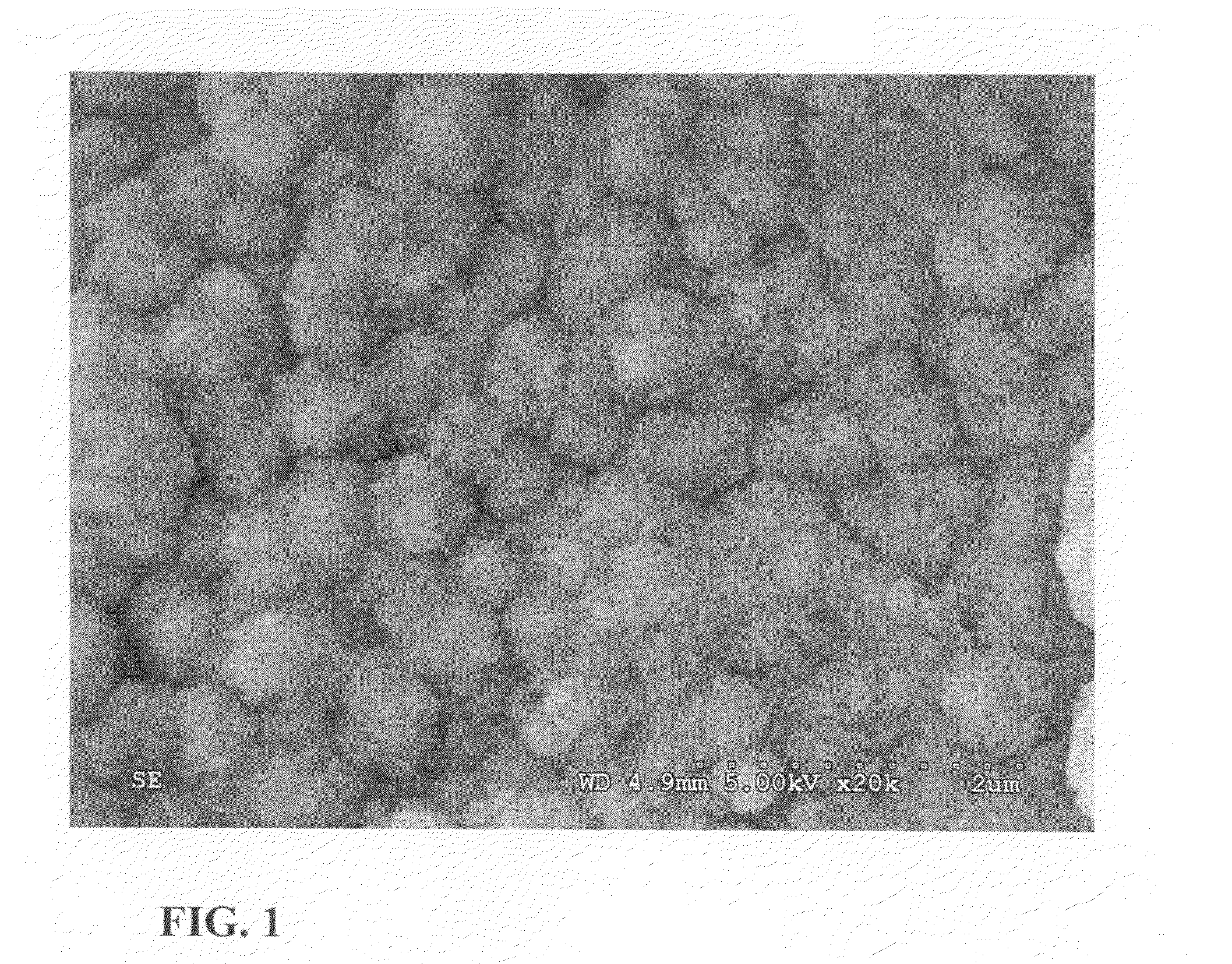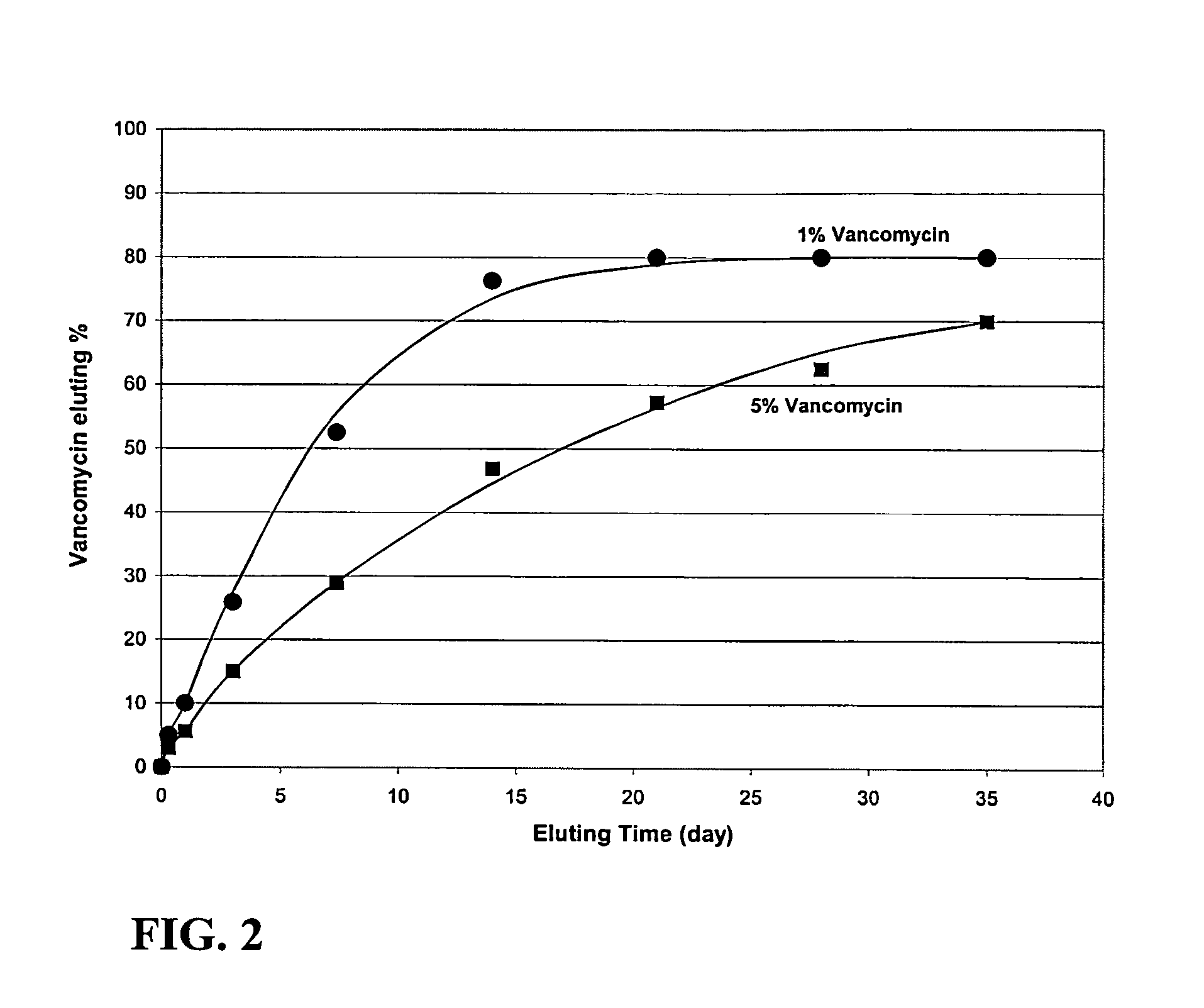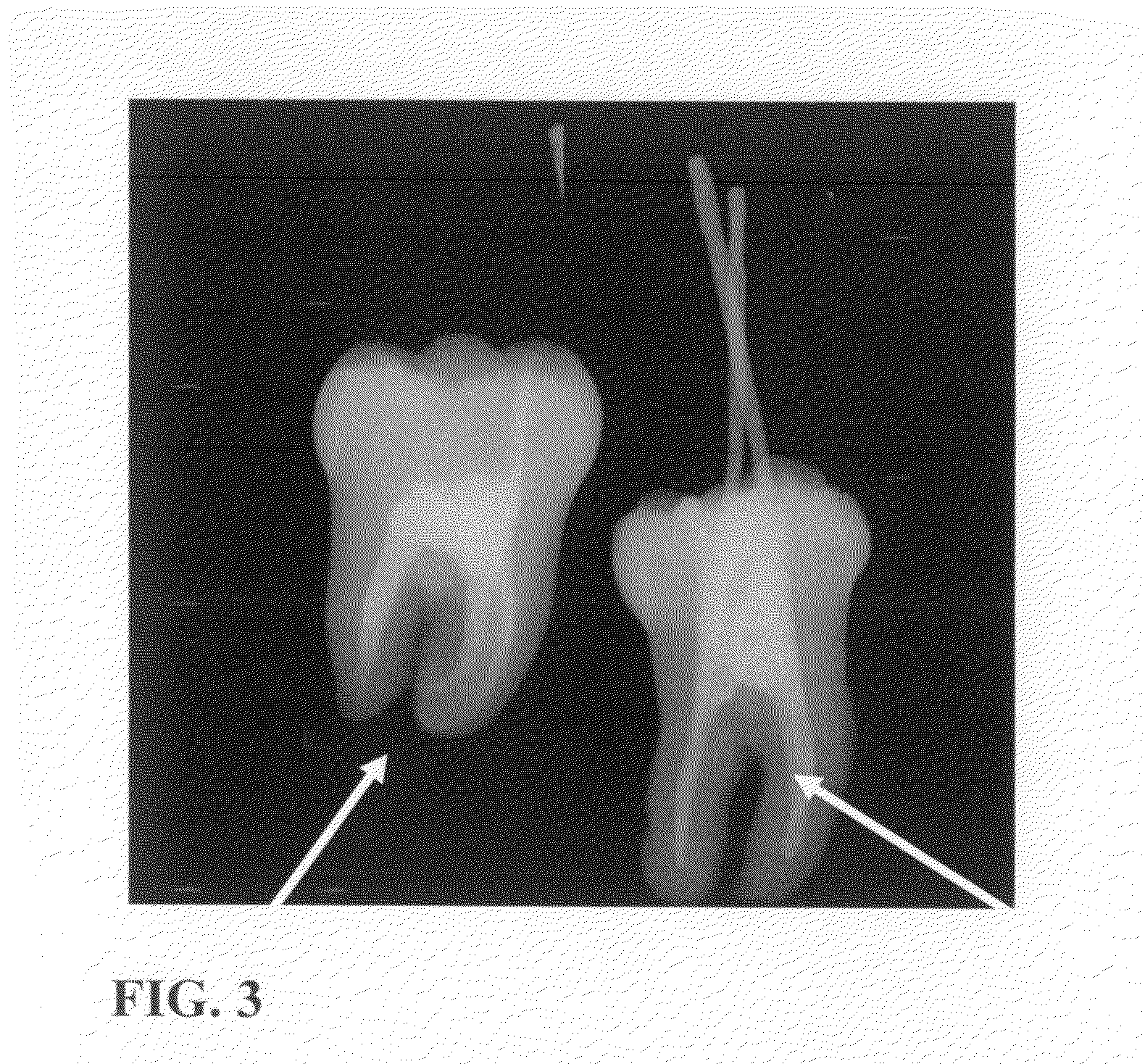Premixed biological hydraulic cement paste composition and using the same
a technology of hydraulic cement and premixed paste, which is applied in the field of hydraulic cement, can solve the problems of reducing the iron content, unsuitable for many dental applications, and gray cement color, and achieves enhanced x-ray imaging, improved x-ray absorption, and high radio-opacity
- Summary
- Abstract
- Description
- Claims
- Application Information
AI Technical Summary
Benefits of technology
Problems solved by technology
Method used
Image
Examples
example 1
Preparation of Calcium Silicate Cement PBP Paste
[0047]This example illustrates processing of pure PBP calcium silicate paste for biomedical applications. Calcium silicates were fabricated by mixing 151 g calcium oxide and 60 g silica and ball milled in alcohol solution for 24 hours. The mixed powder was dried at 110° C. and fired at 1600° C. for 6 hours. As a result of this process, a homogenous mix of 30 wt % dicalcium silicate and 70% tricalicum silicates powder is obtained, which is further ball milled to achieve average particle size of about 10 micrometers. The premixed biocement paste PBP was made by mixing 100 g of such obtained calcium silicate powder and 21 ml of ethylene glycol in planetary ball mill until full homogenization, which in this example was for a period of 45 minutes. The homogenized calcium silicate PBP paste was filled into a syringe for testing injectability and evaluation of setting characteristics and set cement properties. It was determined that this calc...
example 2
Preparation of Phosphate-containing Calcium Silicate PBP Paste
[0048]In this example the phosphate silicate paste was prepared synthetically using well defined pure chemicals (as opposed to poorly defined minerals utilized for preparation of typical commercial Portland cement). The raw materials used for the preparation of calcium phosphate silicate powder were colloidal silica (50 wt % Ludox, from 3M company) for SiO2, calcium hydroxide (99.9%, Sigma-Aldrich) for CaO, tetracalcium phosphate (Ca4(PO4)2O), and dicalcium phosphate anhydrate (CaHPO4.H2O) (Fisher). Alternatively, and with no effect on the final properties of paste, the colloidal silica may be derived from thermal decomposition of hydrated silicon alkoxide such as tetra-eth-oxide silicate (TEOS), or added as fine pure silica powder. The designed composition of the cement was 65 wt % tricalcium silicate, 20 wt % dicalcium silicate, 10 wt % tetracalcium phosphate, and 5 wt % dicalcium phosphate. A 200 g batch was prepared b...
example 3
In Vitro Testing of Bioactivity of the PBP Paste Cements
[0049]This example illustrates bioactivity of calcium phosphate silicate PBP paste. The paste was prepared by the process described above in Example 2. The cement paste was filled into a cylinder mold having a 1 inch diameter and 2 inch height. The samples were incubated at 100% humidity without use of any organic species, and pH was adjusted to 7.4 with 7.5% NaHCO3 solution. All samples were immersed in SBF solution at 37° C. for 10 days, and then the samples were washed with distilled water and dried for SEM observations. It was found that a typical hydroxyapatite structure layer had formed on the surface of the cement, as shown in FIG. 1. These results demonstrate that the PBP cement of the present invention has good bioactivity, osteoinductivity, and osteogenicity.
PUM
| Property | Measurement | Unit |
|---|---|---|
| weight percent | aaaaa | aaaaa |
| particle size | aaaaa | aaaaa |
| particle size | aaaaa | aaaaa |
Abstract
Description
Claims
Application Information
 Login to View More
Login to View More - R&D
- Intellectual Property
- Life Sciences
- Materials
- Tech Scout
- Unparalleled Data Quality
- Higher Quality Content
- 60% Fewer Hallucinations
Browse by: Latest US Patents, China's latest patents, Technical Efficacy Thesaurus, Application Domain, Technology Topic, Popular Technical Reports.
© 2025 PatSnap. All rights reserved.Legal|Privacy policy|Modern Slavery Act Transparency Statement|Sitemap|About US| Contact US: help@patsnap.com



